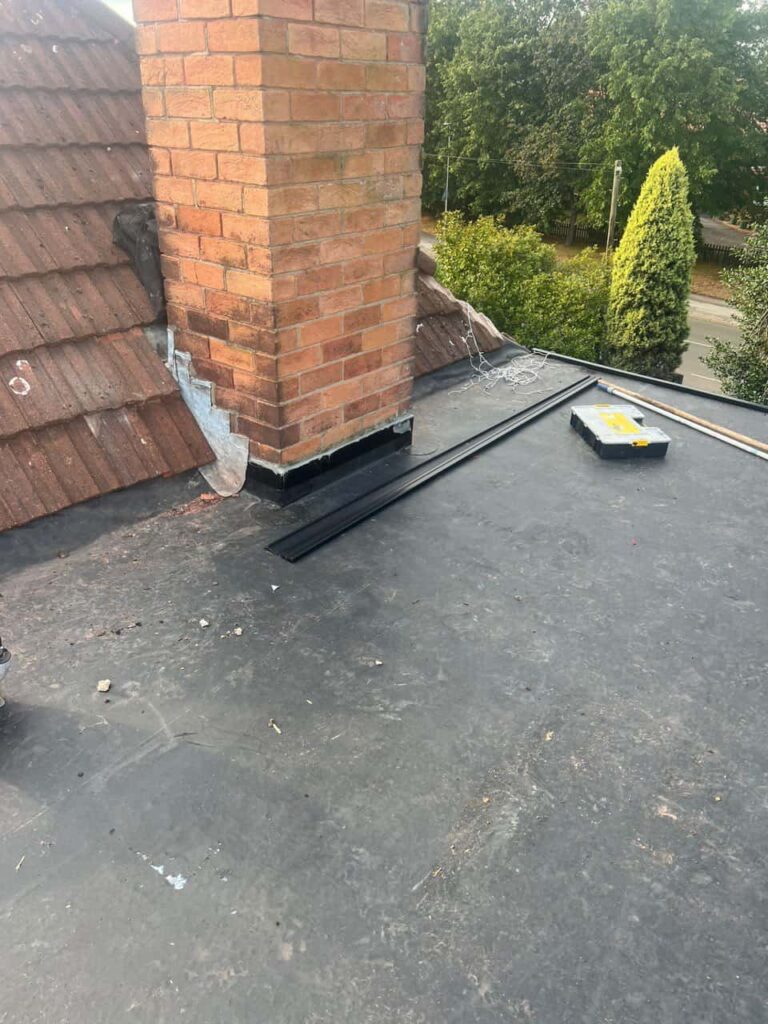When a roof starts to leak, most homeowners want the issue resolved as quickly as possible. However, not all leaks require the same type of repair. Some can be resolved with simple sealing, while others demand a full, more comprehensive fix to ensure long-term protection. Understanding the difference helps you make informed decisions and avoid recurring problems. Bingham Roofing Repairs provides expert roof repair and maintenance services throughout Bingham, Nottingham, offering professional solutions for all levels of roof damage.
What Roof Leak Sealing Involves
Roof leak sealing focuses on tackling small, localised areas where water is entering the roof. It’s often used as a temporary or preventative measure to stop leaks before they cause further damage. The process involves locating the source of the leak and sealing cracks, gaps, or loose joints to prevent water ingress.
Common examples where sealing works well include:
- Minor cracks in flashing or joints between roof materials.
- Deteriorated sealant around chimneys, vents, or skylights.
- Small punctures in felt or flat roofing systems.
- Isolated leaks from a couple of cracked or slipped tiles.
Professional sealing uses high-quality materials designed to withstand weather exposure and temperature changes. When applied correctly, it provides an effective barrier against water penetration for roofs that are otherwise in good condition.
Bingham Roofing Repairs often recommends this approach for newer roofs or minor issues detected early. It’s a quick, effective way to restore waterproofing without the need for large-scale intervention.
When Sealing Alone Isn’t Enough
While sealing is ideal for minor leaks, it’s not suitable for every situation. Some roof leaks are symptoms of deeper, structural problems that can’t be solved with surface sealing alone.
You may need a full repair if:
- The roof is showing widespread signs of wear and ageing.
- Multiple areas of the roof are leaking.
- Flashing, underlay, or roof timbers have deteriorated.
- The roof has sagging sections or visible signs of structural weakness.
In these situations, sealing may temporarily slow the leak, but it won’t stop the ongoing damage beneath the surface. A full repair ensures that all affected materials are replaced or reinforced, restoring the roof’s strength and reliability.
What a Full Roof Repair Involves
A full roof repair goes beyond sealing the visible leak. It addresses the underlying cause of water penetration and restores the roof’s full protective function. This process may involve replacing damaged components and improving drainage to prevent future issues.
A full repair may include:
- Replacing broken or missing tiles and slates.
- Repairing or renewing underlay, felt, or battens.
- Repointing or refitting lead flashing around chimneys and roof joints.
- Cleaning and adjusting roof valleys or gutters for better water flow.
- Installing new protective coatings or membranes where required.
Bingham Roofing Repairs performs detailed roof inspections in Bingham, Nottingham, before starting any repair work. This ensures that the root cause of the problem is found and properly resolved, not just the symptoms.
The Importance of Identifying the Leak Source
Roof leaks can be deceptive. Water often travels across beams or under layers before becoming visible inside the home, which makes pinpointing the exact source difficult. A professional roofer will conduct a detailed inspection to identify where the leak originates and determine whether sealing or full repair is needed.
By identifying the true cause early, homeowners can avoid unnecessary costs and ensure the right level of repair. Bingham Roofing Repairs uses its expertise to deliver accurate assessments for properties across Bingham, Nottingham, preventing recurring leaks.
Comparing Leak Sealing and Full Repair
While both leak sealing and full repair aim to restore a watertight roof, their scope and longevity differ significantly.
Leak Sealing is:
- Best for small, isolated leaks.
- Quick to apply and minimally disruptive.
- A short-to-medium-term solution when the rest of the roof is in good condition.
Full Roof Repair is:
- Suitable for widespread or recurring leaks.
- Addresses the underlying causes, not just the symptoms.
- A long-term solution that strengthens the entire roof structure.
Ultimately, sealing offers a temporary fix, while a full repair ensures long-lasting protection. The correct approach depends on the roof’s age, material, and extent of the damage.
Why Prompt Action Is Crucial
Even a small leak can escalate quickly if ignored. Water entering through minor cracks can saturate insulation, damage structural timbers, and encourage mould growth. What begins as a small issue may eventually compromise the entire roof system.
By contacting professionals like Bingham Roofing Repairs as soon as you notice signs of a leak, you can prevent these issues from spreading and reduce the likelihood of more extensive work later.
How to Tell Which Option You Need
Homeowners can look out for a few signs that indicate whether sealing or full repair may be necessary:
- Small, recent leaks: If the roof is otherwise sound and well-maintained, sealing may be enough.
- Recurring leaks: If the same area leaks again after a repair, the problem is likely deeper and needs a full fix.
- Visible damage: Cracked tiles, missing flashing, or sagging sections suggest a wider structural issue.
- Aging roof: Older roofs with brittle materials often require more comprehensive work.
A professional assessment ensures the right decision is made. Bingham Roofing Repairs provides clear, honest advice to homeowners in Bingham, Nottingham, helping them choose the best repair method for long-term protection.
Preventing Future Leaks
Once your roof has been sealed or repaired, routine maintenance is essential for keeping it in good shape. Regular inspections after storms or seasonal changes help spot early warning signs before they develop into larger problems.
Simple maintenance tips include:
- Clearing gutters and downpipes to prevent water build-up.
- Checking for cracked tiles or lifted flashing.
- Removing moss and debris to prevent moisture retention.
- Booking annual roof inspections with trusted professionals.
These steps extend the lifespan of your roof and reduce the risk of future leaks.
Conclusion
The key difference between roof leak sealing and full repair lies in the scale of the problem. Sealing is ideal for minor leaks and preventative maintenance, while a full repair tackles deeper, structural issues for lasting protection. Acting quickly at the first sign of trouble is essential to avoid further damage.
Bingham Roofing Repairs offers professional inspections, leak detection, and comprehensive repair services across Bingham, Nottingham. With the right solution, you can restore your roof’s strength, prevent future leaks, and protect your home from the elements for years to come.
Call us on: 0115 647 1193
Click here to find out more about Bingham Roofing Repairs
Click here to complete our contact form and see how we can help with your roofing needs.

